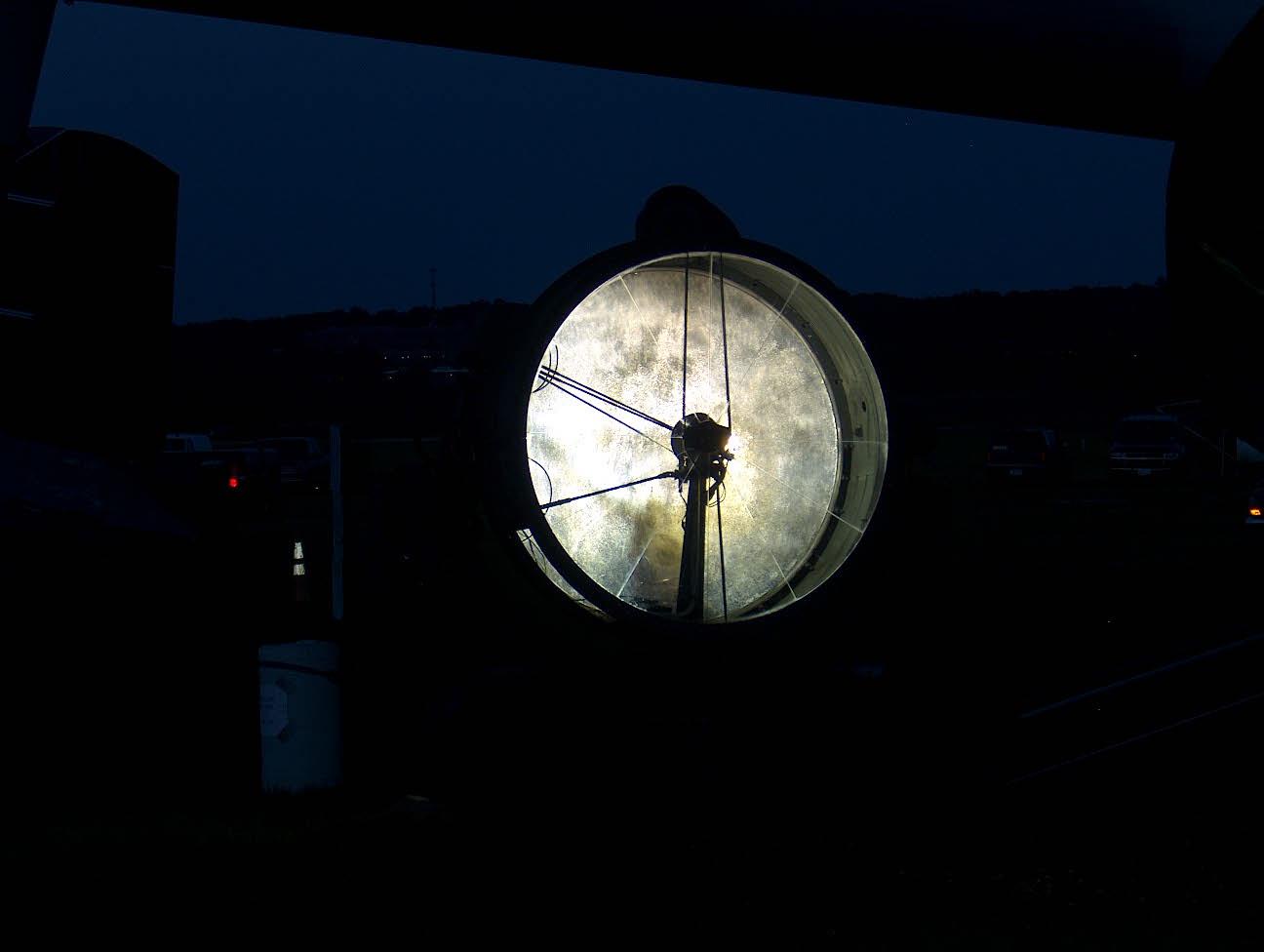
GE Searchlight
Carbon-Arc Searchlight
"Searchlight"

"Searchlight"
National Warplane Museum
The General Electric Carbon Arc Searchlight stands as a powerful reminder of the home front defense systems employed during World War II. Designed to illuminate enemy aircraft during night raids, these massive searchlights played a critical role in coastal defense, anti-aircraft operations, and early radar-directed targeting.
Introduced in the 1930s and widely deployed during WWII, GE’s 60-inch carbon arc searchlights produced an intense beam of light capable of reaching over 5 miles into the night sky. The light source was generated by arcing electrical current between carbon rods, creating an extraordinarily bright, focused beam. Searchlight units often worked in coordination with radar installations and anti-aircraft batteries, sweeping the skies to expose enemy bombers to ground-based defenses. Beyond military use, these searchlights later became symbols of public morale at war bond drives, rallies, and major public events.
During WWII, these searchlights were stationed along American coastlines, around key industrial targets, and near major cities as part of the Army’s anti-aircraft artillery defenses. In an era before modern night vision and advanced radar, searchlights served as both a psychological deterrent and a tactical tool—allowing gunners to visually track enemy aircraft during nighttime raids.
1942 GE Carbon Arc Searchlight (Serial No. 62334)
This fully operational unit was built in 1942 and donated to the National Warplane Museum in the early 2000s by noted warbird collector and aviator Kermit Weeks. Since its arrival, it has been fully restored by museum volunteers and is regularly demonstrated during special events. Its powerful beam continues to awe visitors today, serving as a living artifact of America’s wartime homeland defenses.
WWII Searchlight
Donated by Kermit Weeks
Method: Donated
T-Hangar
Other vehicles in our collection


